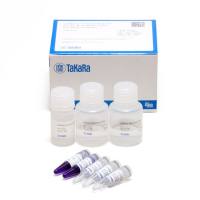Female meiosis in Drosophila is interesting and exceptional in many respects. First, like all dipterans, Drosophila has a polytrophic type of ovary characterized by the presence of nurse cells, which provide ooplasma and yolk to developing oocytes, whereas meiotic chromosomes are metabolically inactive. Meiosis in this type of ovary is characterized by the incorporation of all chromosomes into a karyosome at early meiotic prophase (1 ,2 ). Second, in addition to chiasmatic bivalents, achiasmatic chromosomes also segregate quite regularly from each other; for example, in Drosophila melanogaster the tiny fourth chromosomes are always achiasmatic in oogenesis, but nevertheless segregate regularly from each other. Segregation of achiasmatic chromosomes is regular even when the univalent chromosomes are heterologous. The phenomenon is termed “distributive segregation” and is controlled by the distributive system (for review, see refs. 3 –6 ). To explain achiasmatic segregations, two alternative models have been put forward. One is based on the fact that in female meiosis, conventional diplotene and diakinesis stages are absent and both bivalents and achiasmatic chromosomes are incorporated in a karyosome that persists until prometaphase I. According to the model, physical association of segregating univalents, homologous or heterologous, is established at pachytene while the karyosome is formed and these associations lead to co-orientations of chromosomes on developing spindles (4 ,7 ,8 ).

![四[N-邻苯二甲酰-(S)-叔亮氨酸基]二铑双(乙酸乙酯)加合物;154090-43-4;Elemental analysis(Nitrogen) 3.30 to 4.50 %;V66234-25mg](https://img1.dxycdn.com/p/s14/2025/1029/004/8672158669127143891.jpg!wh200)




